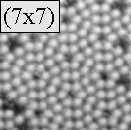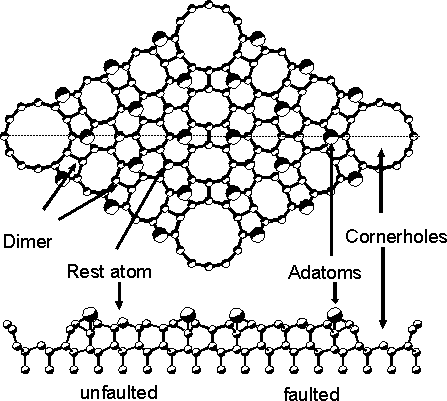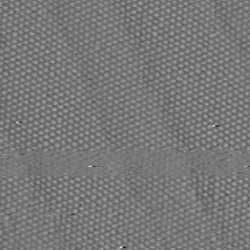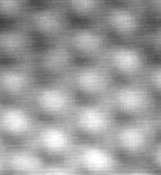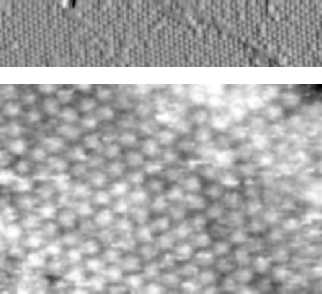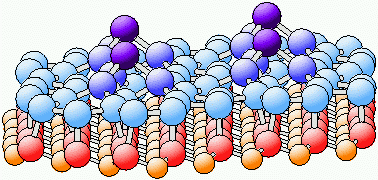|
But beside the confirmation of the proposed model of Au(111) reconstruction
STM experiments give also information about aperiodic structures, which
diffraction experiments are insensitive to.
As gold exhibits a threefold symmetry,
the three directions which the ridge can run along are of equal probability.
Thus between regions with different reconstruction, domain boundaries are formed.
On large areas the double ridges change orientation about every 280Å.
This leads to the so called herringbone structure. On an even larger scale
herringbone structures of different orientation form a mosaic structure.
It has also become evident that the herringbone structure is quite sensitive
to defects like e.g. step edges. |
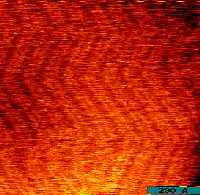
Herringbone structure of Au(111)
|
